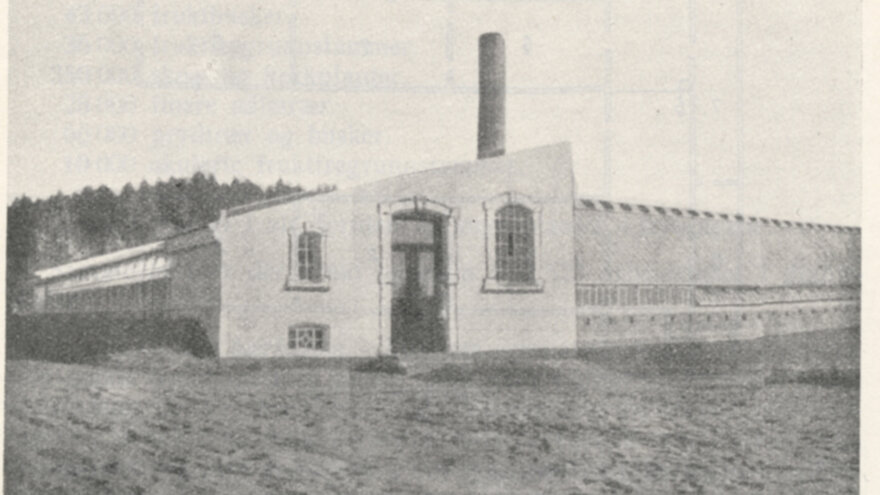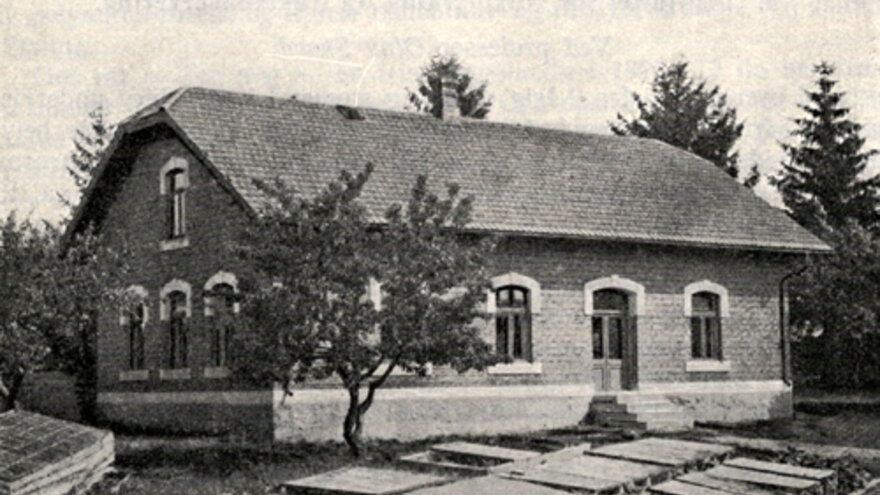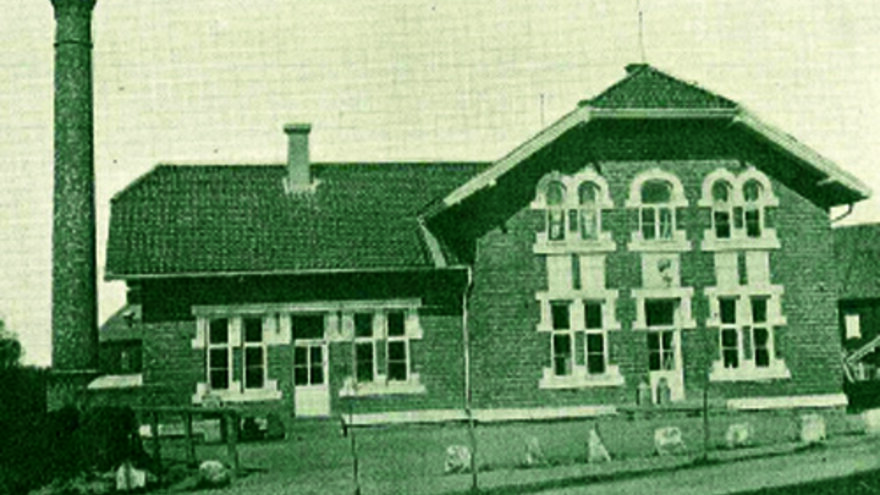Ole Sverre also drew several smaller buildings and sheds for the university. Of these, three buildings still stand, either completely or partially. They are the Drivhuskomplekset (greenhouse), Fruktanvendelseshuset/Fruktbruksområdehuset (fruit use house), and Meieribygningen (The dairy building).
Drivhuskomplekset (1899)
The Greenhouse Complex were placed at the northern end of the orchard, not too far from the Gartnarboligen (The Gardeners's Recidence). It was a spacious area that could be expanded if the teaching required it. The greenhouse complex was divided into eight departments in addition to a large work area in the center. Altogether, there was approximately 500 square meters of floor space.

The complex had its own distinct character compared to the rest of the university facilities. The functional gabled roof required deviations from the surrounding half-hipped roofs.
The frames around the windows were different, and the window bars were made of iron. This was done because they anticipated high humidity in the rooms. Another distinct feature was that the walls were plastered and painted white.
Most of the greenhouse complex has been demolished today, and the premises of the Center for Climate-Regulated Plant Research (SKP) have been built on the site. Only one of the old greenhouses remains.
Fruktanvendelseshuset/Bruksområdehuset (1901)
”Fruit Utilization House/ Utilization House”. In 1903 the director of Horticulture H. Misvær defined fruit utilization as; the preparation of the fruit, so that it can be stored for a longer period of time either fresh or pickled, dried or also processed into wine, juice, marmalade, jelly, etc.

It is a brick building, 16 meters long and 9 meters wide. There are two workrooms and a storage room on the ground floor. Above the small workroom, there is a loft. The juicepressing room has a high ceiling. There are windows in the gable and movable windows in the roof. Steam from the juicing process was released here. The building has a half-hipped roof like the other brick buildings in the complex. The roof is covered with tiles, the window frames resemble those of the other buildings, the foundation is made of reddish granite, and there are plaster bands at the transition between the foundation and the brick wall. Overall, the building blends well with the rest of the university facilities.
 Meieribygningen (1900)
Meieribygningen (1900)
In 1900, dairy education was to be started. Then it was necessary to have a dairy where one could practice dairying. The ground plan for a new dairy was delivered by dairy inspector Benterud and working drawings were made by architect Sverre.

Bygninga inneheldt eit moderne meieri med:
- Milk reception with milk scale and collection container
- Shop
- Separation room with two separators, preheating and pasteurizing device, coolers for flute, core and so on
- Cooling room with coolers for skimmed milk and cemented cooling basins with space for simultaneous cooling of 2,000 liters of milk
- Butter room with kneading machine, cream barrel, kneading board, and refrigerated box
- Engine room
- Ysteri (where cheese is made) with an American and a round cheese vat, as well as a cheese press
- Cheese chamber
- In the basement, there were washing facilities, primary stirrers, a steam boiler, and a whey pan


On the second floor, there were living rooms and rooms for female apprentices and students at the college. In the workrooms, the walls are clad with plaster, in the shop and cooling room they are clad with white faience tiles at chest height. The floors are partly polished cement and partly covered with clay tiles and asphalt. The windows are made of wood and the chimney for the steam engine is built entirely outside the building. It was 19 meters high.
The building was located at the intersection of national road 152 (then Drøbakchausseen) and the village road south to Ås church. It consisted of two wings at right angles to each other. The roof shape is the same as in the large institutional buildings, but the roofing was then of glazed curved roof tiles in brick. Gable tops and spires are missing.
The facade features protruding grout masonry of brick in block bond, with a plastered band between the foundation and brick wall. Two of the masonry rings for tying up horses are still in place. The facade details and especially the design of the windows link the dairy to the Circus and the Main Building. The building was later extended with a north wing. This gave the building a more monumental character, as it became symmetrical around one central risalit."
Information is sourced from the book ”Bygninger ved Norges landbrukshøgskole tegnet av Ole Sverre” written by Erik Aas jr. in 1996.
